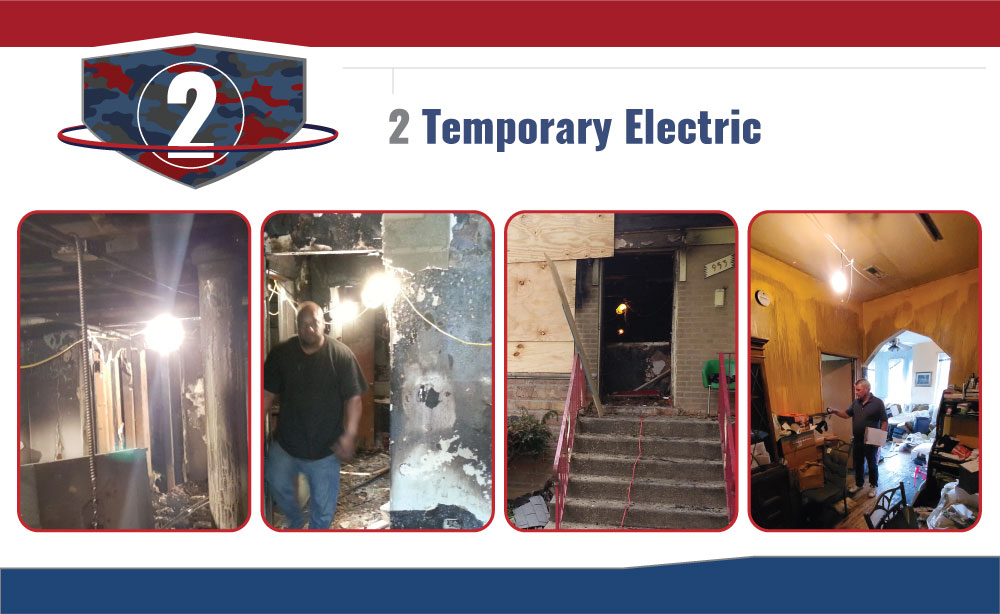Lighting & Electrical: Let There Be Light
Lighting is essential when performing tasks related to construction, especially when you’re dealing with electricity or running wires. We all know that not every jobsite is the same, so we must be prepared when the time comes. Temporary lighting is often a necessity when wiring a burned-out location and or structure that doesn’t have electricity readily available, we make sure to provide a safe, lighted environment for: example when your home or facility is properly secured and boarded-up with no electrical, YOU’RE GOING TO NEED TEMPORARY LIGHTING. When entering the building to view the damages, as well as retrieving personal contents, and itemize the damage at hand.
- Fire investigators
- Insurance adjusters
- Returning fire victims

Take the Quiz to Learn More
Our Service Areas
Questions?
A: Unlike permanent lighting, temporary lighting is installed on a job site for a limited amount of time. ... These sockets
connect to bulbs using leads that are linked to an electrical connection and or generator to establish temporary
illumination.
A: Adequate lighting means levels of illumination suitable to tasks the resident chooses to proper lighting or the facility staff able to perform in.
A: Why is lighting important? Whether in industrial or office settings, proper lighting makes all work tasks easier. ... Appropriate lighting can prevent workplace incidents by increasing the visibility of moving machinery and other safety hazards.
A: General construction areas require a minimum of 5 foot-candles of illumination, and plants and shops require at least 10 foot-candles. For other types of workplaces, the minimum illumination standards are as follows: First-aid stations and infirmaries: 30 f-c. Warehouses, walkways, and exits: 10 ft-c.
A: Temporary wiring may be used during the period that experimental or developmental work for a particular research project is being conducted and until it has served the purpose for which installed at which time it must be removed immediately.
A: Multiply width of room x length of room x 1.5 = amount of total minimum wattage needed (assuming an eight-foot ceiling). Divide by 60 to get the number of 60-watt equivalent bulbs required. Then, add up the wattage in each bulb in each fixture to figure out how many light fixtures are needed.
A: Protective Coverings for All Light Fixtures, all light fixtures, whether they contain fluorescent bulbs or not, must have protective plates. In areas where light fixtures could be damaged, they must be guarded by sufficiently strong barriers to prevent shattering
A: Good lighting should be flexible enough to light a given area, while other areas remain in relative darkness. This has more to do with number and placement of fixtures than wattage or number of bulbs.

